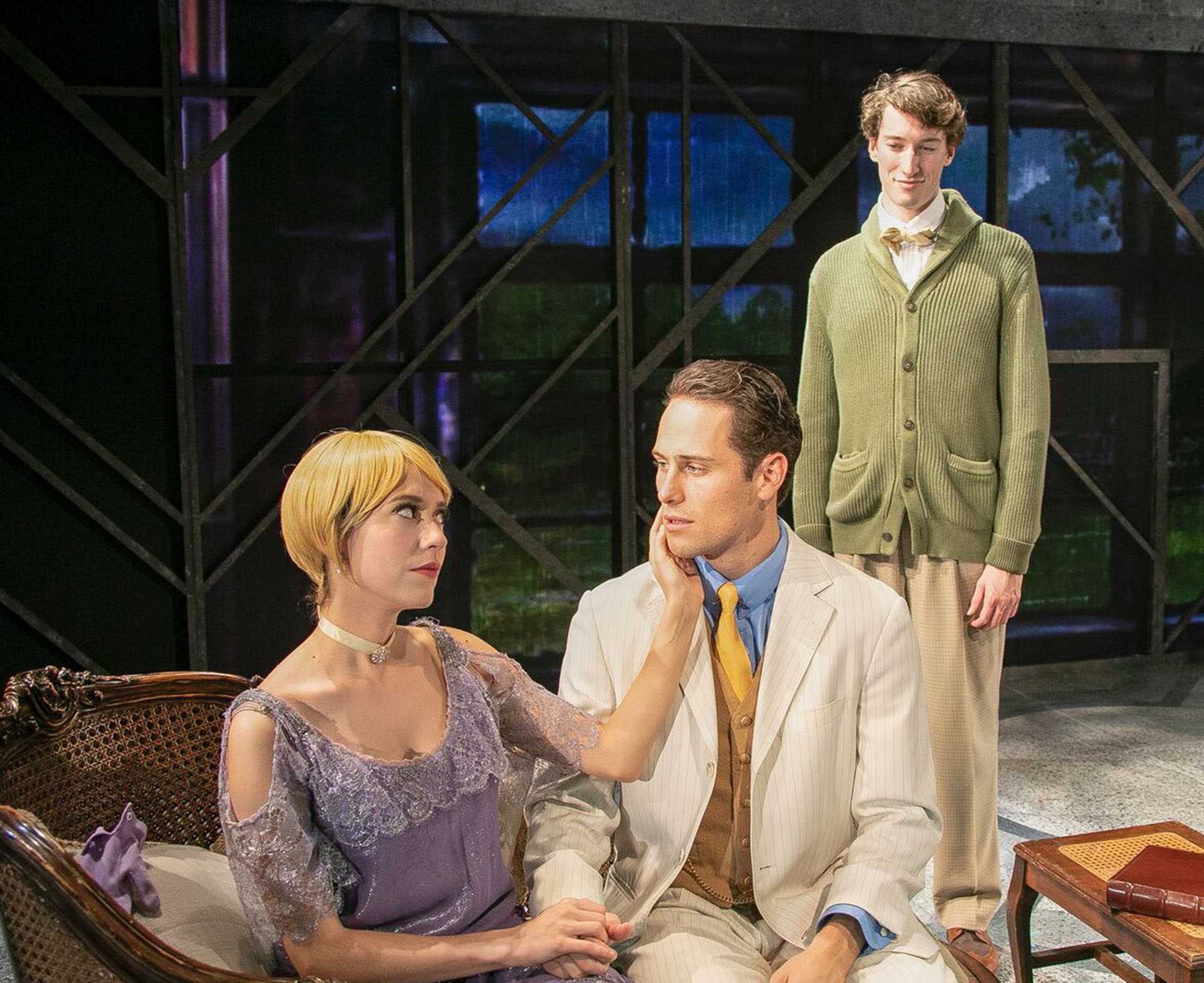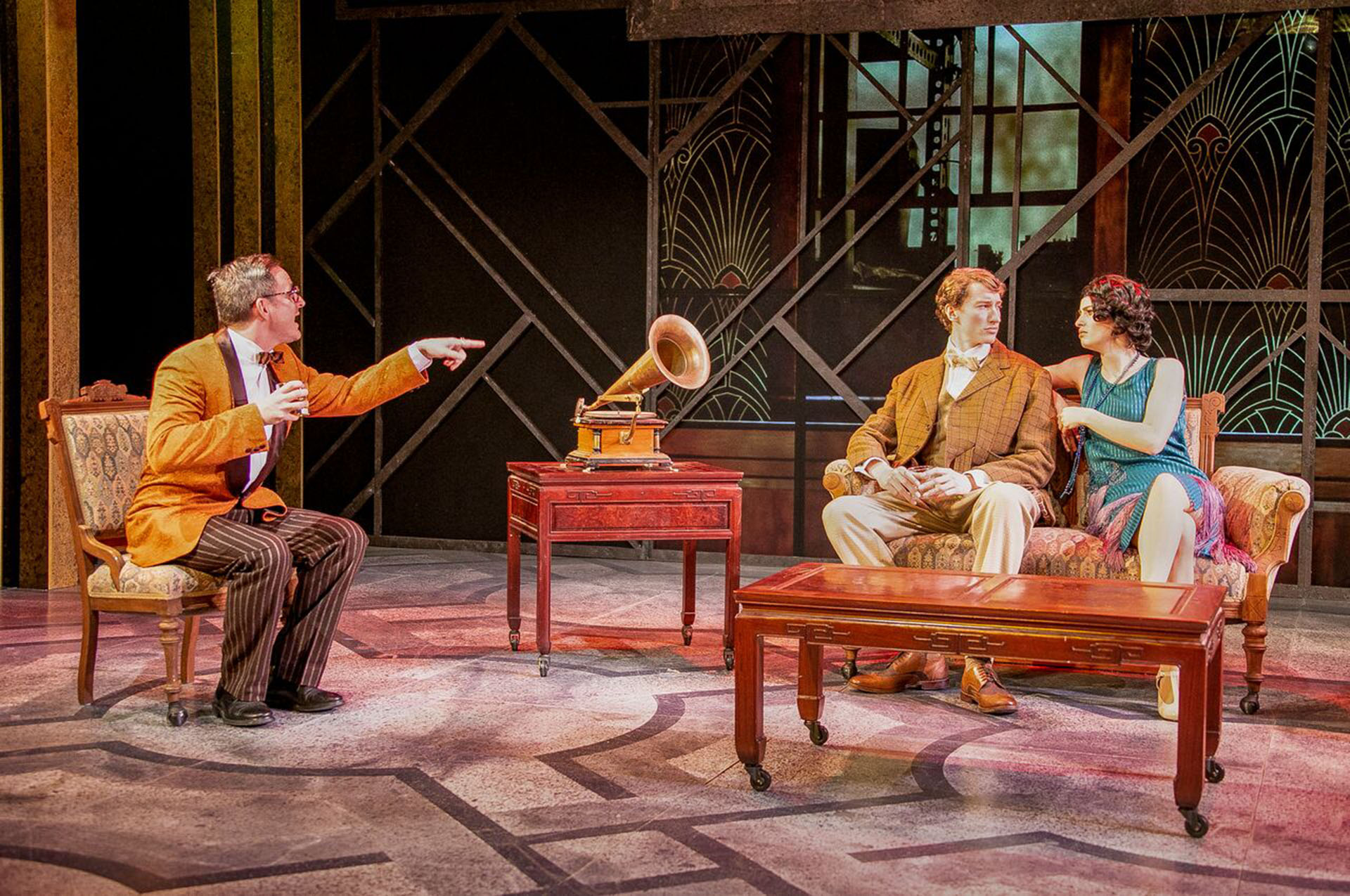Great Gatsby At Bay Street


Way before the post-grad anti-social angst of Benjamin Braddock, prior to the rebellious teenage nihilism of Holden Caulfield, there was Nick Carraway — F. Scott Fitzgerald’s original outsider, who arrives to spend the summer in the fictional Long Island town of West Egg after returning from the Great War.
It is through Nick’s eyes — or Fitzgerald’s — that the audience gets to experience the callow and careless mega-wealthy socialite wave of the pre-crash 1920s, and those left in its wake, in Bay Street’s production of The Great Gatsby, part of the “Literature Live!” series that every November brings a classic novel to the stage. Past productions have included To Kill A Mockingbird, The Crucible, Diary of Anne Frank, Of Mice and Men, Death of a Salesman, and other high school required reading, compressed to a 90-minute, no intermission production which seeks to engage schools with daytime performances (over 30,000 students have been to the productions over the past decade), along with more mature patrons in the evening.
As a refresher for those a bit past high school age, Fitzgerald’s story, adapted for the stage by Simon Levy and directed by Joe Minutillo, follows Carraway’s association with Tom and Daisy Buchanan, who live in the posh East Egg across the bay. Tom is a college acquaintance and Daisy is a distant cousin of Nick’s. Jordan Baker (well played by Alexandra Kopko), a professional but immoral female golfer, is Daisy’s confidante and a love interest for Nick (whose questionable sexuality is left out in this shortened version), but it is Nick’s West Egg opulent neighbor, the mysterious Jay Gatsby, who is at the epicenter of the story.
Consumed by his obsession with Daisy — with whom he had a brief but intense encounter before going off to war — Gatsby has created an illusory world of endless orgastic parties only with the hopes that Daisy will come to one of them. Nick is eventually engineered into bringing Gatsby and Daisy back together again. Theirs is a love based on memory and passion. Tom has his woman, Myrtle, who is married to George Wilson, a poor and lackluster garage owner, and that affair is based on Tom’s status, money, and power.
And that is the crux of The Great Gatsby, the levels of wealth and what it can buy. Can it buy love? Happiness? Absolution for murder?
It’s Gatsby’s “extraordinary gift for hope” that attracts Nick, whose father told him not to be critical of others in the famed first lines of the book. And it is Nick who finally stands up for scruples and honesty at the end, although it affects nothing but his own battered morale.
The production at Bay Street is very good. Stephanie Vertichio’s choreography captures little snippets of Jazz Age Charleston-ing couples. Sara Carolynn Kennedy plays Daisy with more of the character’s cynicism up front and center, rather than the just-about-to-crack “sad and lovely” Daisy most often associated with the schizophrenic Zelda Fitzgerald, allegedly the basis for Mrs. Buchanan. There is more of a lightness in Daisy and Tom’s relationship; Tom (wonderfully portrayed by Dan Fenaughty) swoops her up in his arms, carries her around the room, a choice that makes Gatsby’s fantasy that Daisy has loved only him for all these years more obviously a fantasy.
Charlie Westfal as Gatsby does an admirable job, friendly, affable, and honest with Nick — a fellow veteran — but cagey and mysterious about his work and money, and clearly obsessed with Daisy. He eventually wins Nick over, even though he represents everything that Nick was brought up to scorn. Amanda Kristin Nichols plays Myrtle as such a forlorn and doomed character — so eager to join the upper set, to be a Jazz Age baby, but with a noteworthy Lawn Guyland accent that will make the audience smile. Chauncy Thomas, no stranger to “Literature Live!”, plays George Wilson with just the right modicum of desperation. But it is John Kroft as Carraway who is the hub of this Gatsby, a man who starts out as a bystander, mulling over his father’s advice to not judge others who have not had his “advantages” (which in Nick’s case amounts to wealth of character over money) but ends up cursing out the “rich, careless people” who treat the rest of humanity as chess pieces.
There were parts missing of course; there always are when a work must be snipped for school audiences. The billboard eyes of Eckleburg, the oculist, representative of more illusion, loom over Mike Billings’s set throughout the show, but the symbolism is only briefly touched upon. However, all in all, Minutillo’s production of The Great Gatsby manages to capture the essence of Fitzgerald’s tale of outer trappings and inner longings, as we are all borne back ceaselessly into the past.
The Great Gatsby runs through November 25. For tickets and information, visit www.baystreet.org.
bridget@indyeastend.com


